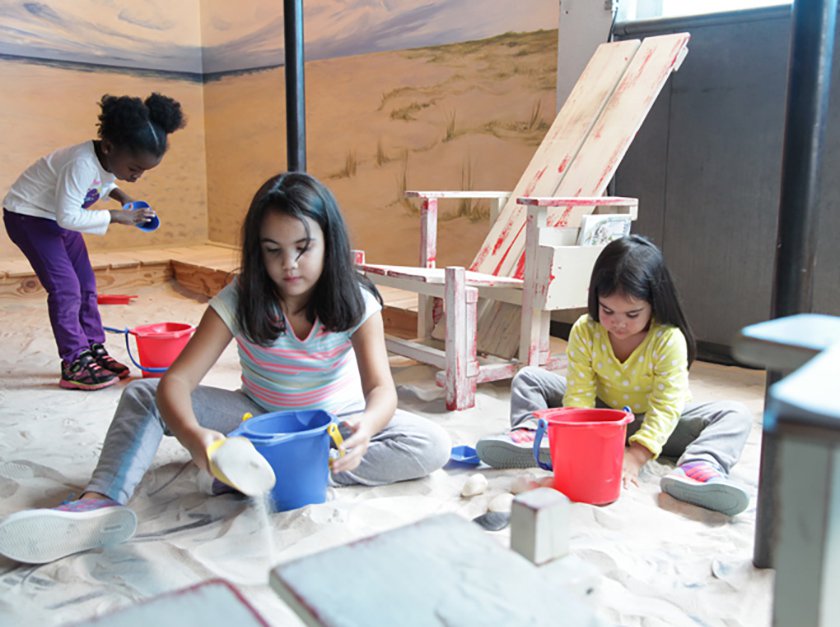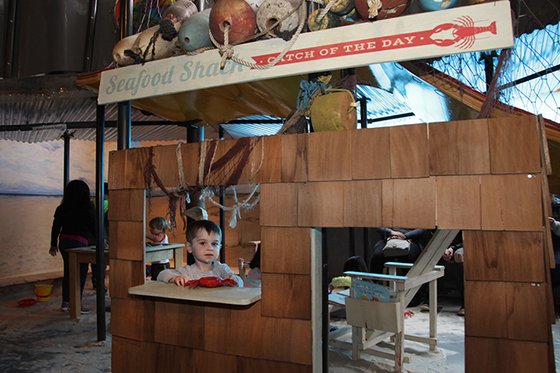Have you ever noticed the difference between the sand on the north shore and south shore? Long Island is made of sand. Sometimes the sand beneath your feet is buried under dirt or concrete, but if you dig a little deeper, sooner or later you’ll reach sand. The movement of grains of sand played a significant part in shaping our natural world.
Granular materials like sand display a curious blend of properties. Dry sand can be poured like water yet unlike liquid, it can support the weight of a person walking on the beach. Samples of sand from around the world showcase kernels of all sizes and colors from the Sunken Forest to Walking Dunes, from Florida to California and Hawaii, from Bermuda and Barbuda to Egypt and England.
Visitor Tip
Visit before Bubbles so you avoid becoming a sticky, sandy monster!

Girls exploring our indoor beach. Sand play is particularly good at developing a sense of textures. Children can contrast sand texture with grass, dirt, concrete or wood. Playing in sand is an opportunity for unstructured play time.
What You Learn:
- Physical properties of sand
- Geology
- Local Fish and Bird Identification
- Map reading
- Role Play
Continue the Fun at Home
Take a closer look at the sand on your next beach adventure. What colors, shapes, sizes and materials do you see? Sand play is a wonderful opportunity for the whole family to build castles together.
